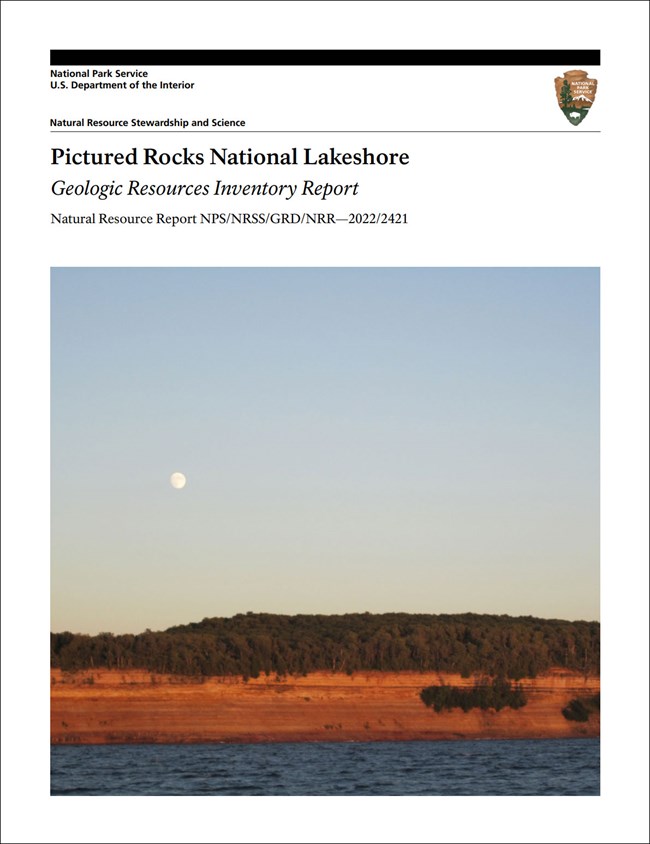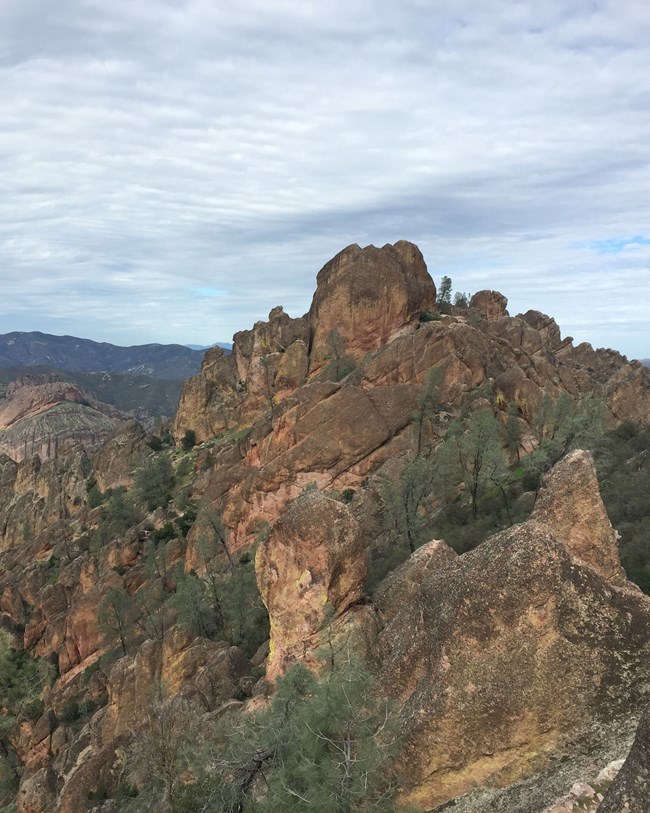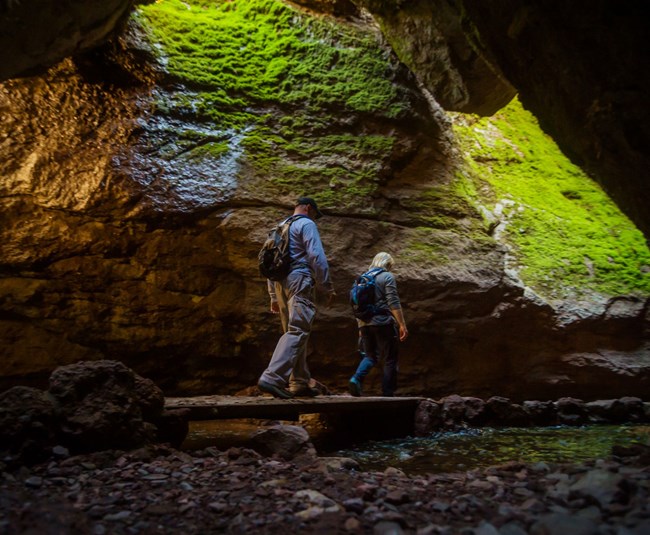Last updated: July 15, 2024
Article
NPS Geodiversity Atlas—Pinnacles National Monument, California
Geodiversity refers to the full variety of natural geologic (rocks, minerals, sediments, fossils, landforms, and physical processes) and soil resources and processes that occur in the park. A product of the Geologic Resources Inventory, the NPS Geodiversity Atlas delivers information in support of education, Geoconservation, and integrated management of living (biotic) and non-living (abiotic) components of the ecosystem.

Introduction
Pinnacles National Park (PINN) is located in the southern Gabilan Range, about 64 km (40 mi) inland from the Pacific Ocean and about 129 km (80 mi) south of the San Francisco Bay Area in Monterey and San Benito Counties, California. Originally proclaimed as a national monument on January 16, 1908, it was re-designated as a national park on January 10, 2013 (National Park Service 2016). PINN encompasses approximately 10,799 hectares (26,686 acres) and protects valuable geologic resources that include spire-like rock formations standing 152–366 m (500–1,200 ft) high, an extensive assemblage of rare talus caves, and a variety of volcanic features associated with the Neenach Volcanic Field (National Park Service 2015b). Volcanic rocks of the Neenach Volcanic Field are believed to have formed ~23 Ma near present-day Lancaster, California, and have been transported to their current location some 315 km (196 mi) northwest by the extensive San Andreas fault system (Turner et al. 1970; Matthews 1973b; Sims 1993). Over the course of millions of years, the forces of wind and water have slowly sculpted the volcanic rocks to form a unique landscape of deep narrow gorges, caves, colonnades, and monoliths.

Geologic Setting
Situated along the San Andreas Fault, the geology of Pinnacles National Park has been heavily influenced by transform plate motion and contains rocks that have been transported hundreds of kilometers or miles from where they were formed. The geology of PINN can be subdivided into three main groups of rocks: (1) Cretaceous-age intrusive rocks; (2) volcanic rocks of the Oligocene–Miocene Pinnacles Volcanics; and (3) Neogene and younger rocks of the Monterey Formation, Pancho Rico Formation, and Paso Robles Formation. Older Cretaceous units are mapped along the western boundary and southeastern portion of PINN and include quartz monzonite of Bickmore Canyon and quartz diorite-granodiorite of Johnson Canyon. The Pinnacles Volcanics consist of rhyolite, dacite, andesite, agglomerate, breccia, and pumice lapilli-tuff that underlie the central core of the park between the Pinnacles Fault to the west and Chalone Creek Fault to the east. The Pinnacles Volcanics are correlative with the Neenach Volcanics, two igneous units that are now separated 315 km (196 mi) along strike of the San Andreas Fault (Turner et al. 1970; Sims 1993). Over the course of geologic time, the San Andreas Fault has split and slowly offset the Neenach Volcanic Field, leaving petrologically similar lithologies on either side of the transform boundary. Rocks of the Miocene Monterey Formation and Pliocene Pancho Rico Formation are located east of the Chalone Creek Fault in northeastern PINN. The youngest bedrock is represented by the Pliocene– Pleistocene Paso Robles Formation along the southwestern margin of the park.
Regional Geology
Pinnacles National Monument is a part of the Pacific Border Physiographic Province and shares its geologic history and some characteristic geologic formations with a region that extends well beyond park boundaries.
- Scoping summaries are records of scoping meetings where NPS staff and local geologists determined the park’s geologic mapping plan and what content should be included in the report.
- Digital geologic maps include files for viewing in GIS software, a guide to using the data, and a document with ancillary map information. Newer products also include data viewable in Google Earth and online map services.
- Reports use the maps to discuss the park’s setting and significance, notable geologic features and processes, geologic resource management issues, and geologic history.
- Posters are a static view of the GIS data in PDF format. Newer posters include aerial imagery or shaded relief and other park information. They are also included with the reports.
- Projects list basic information about the program and all products available for a park.
Source: NPS DataStore Saved Search 3146. To search for additional information, visit the NPS DataStore.
A NPS Soil Resources Inventory project has been completed for Pinnacles National Monument and can be found on the NPS Data Store.
Source: NPS DataStore Saved Search 3097. To search for additional information, visit the NPS DataStore.
Related Articles
Pinnacles National Monument
National Park Service Geodiversity Atlas
The servicewide Geodiversity Atlas provides information on geoheritage and geodiversity resources and values within the National Park System. This information supports science-based geoconservation and interpretation in the NPS, as well as STEM education in schools, museums, and field camps. The NPS Geologic Resources Division and many parks work with National and International geoconservation communities to ensure that NPS abiotic resources are managed using the highest standards and best practices available.

